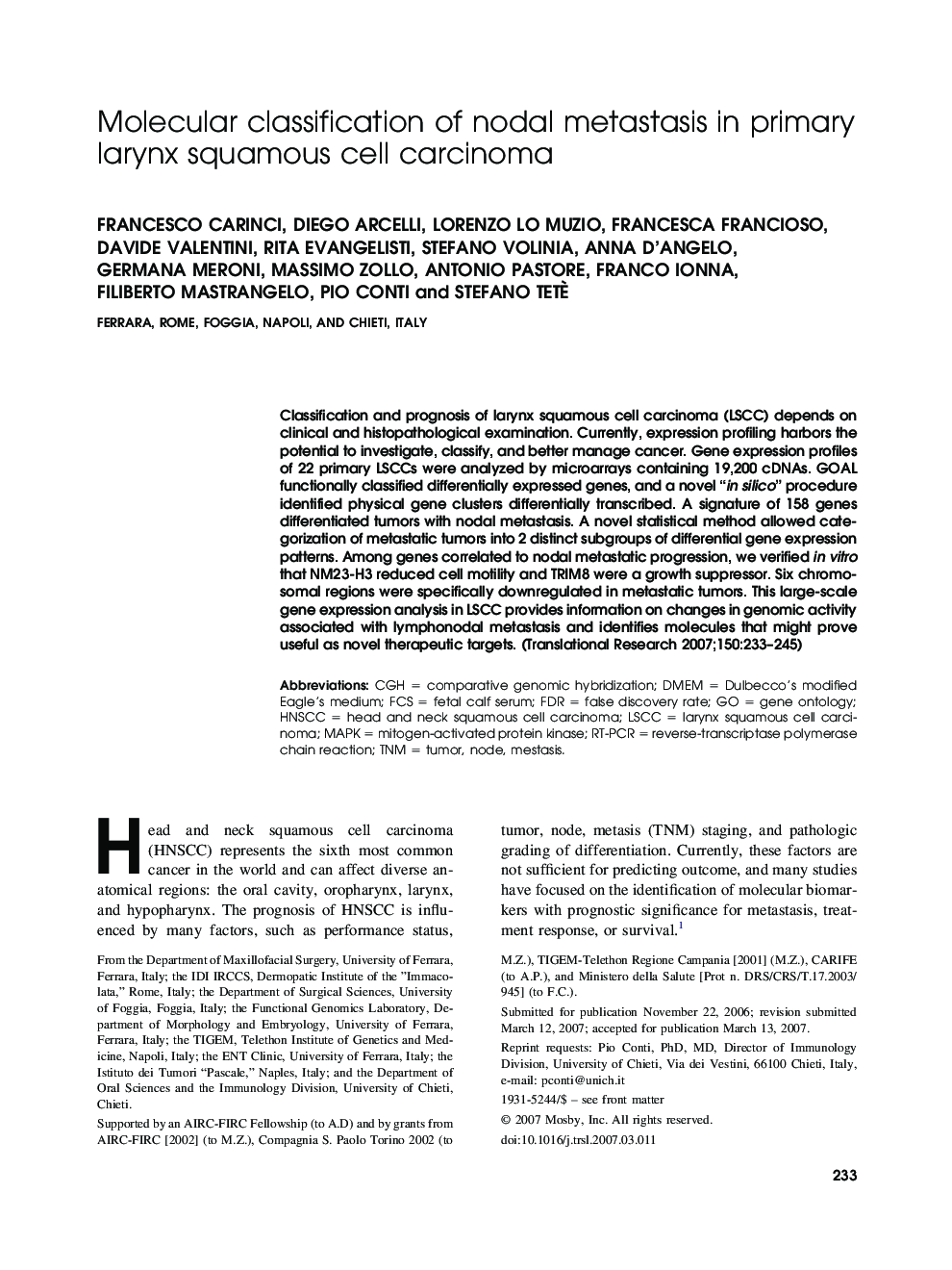| Article ID | Journal | Published Year | Pages | File Type |
|---|---|---|---|---|
| 3841399 | Translational Research | 2007 | 13 Pages |
Classification and prognosis of larynx squamous cell carcinoma (LSCC) depends on clinical and histopathological examination. Currently, expression profiling harbors the potential to investigate, classify, and better manage cancer. Gene expression profiles of 22 primary LSCCs were analyzed by microarrays containing 19,200 cDNAs. GOAL functionally classified differentially expressed genes, and a novel “in silico” procedure identified physical gene clusters differentially transcribed. A signature of 158 genes differentiated tumors with nodal metastasis. A novel statistical method allowed categorization of metastatic tumors into 2 distinct subgroups of differential gene expression patterns. Among genes correlated to nodal metastatic progression, we verified in vitro that NM23-H3 reduced cell motility and TRIM8 were a growth suppressor. Six chromosomal regions were specifically downregulated in metastatic tumors. This large-scale gene expression analysis in LSCC provides information on changes in genomic activity associated with lymphonodal metastasis and identifies molecules that might prove useful as novel therapeutic targets.
